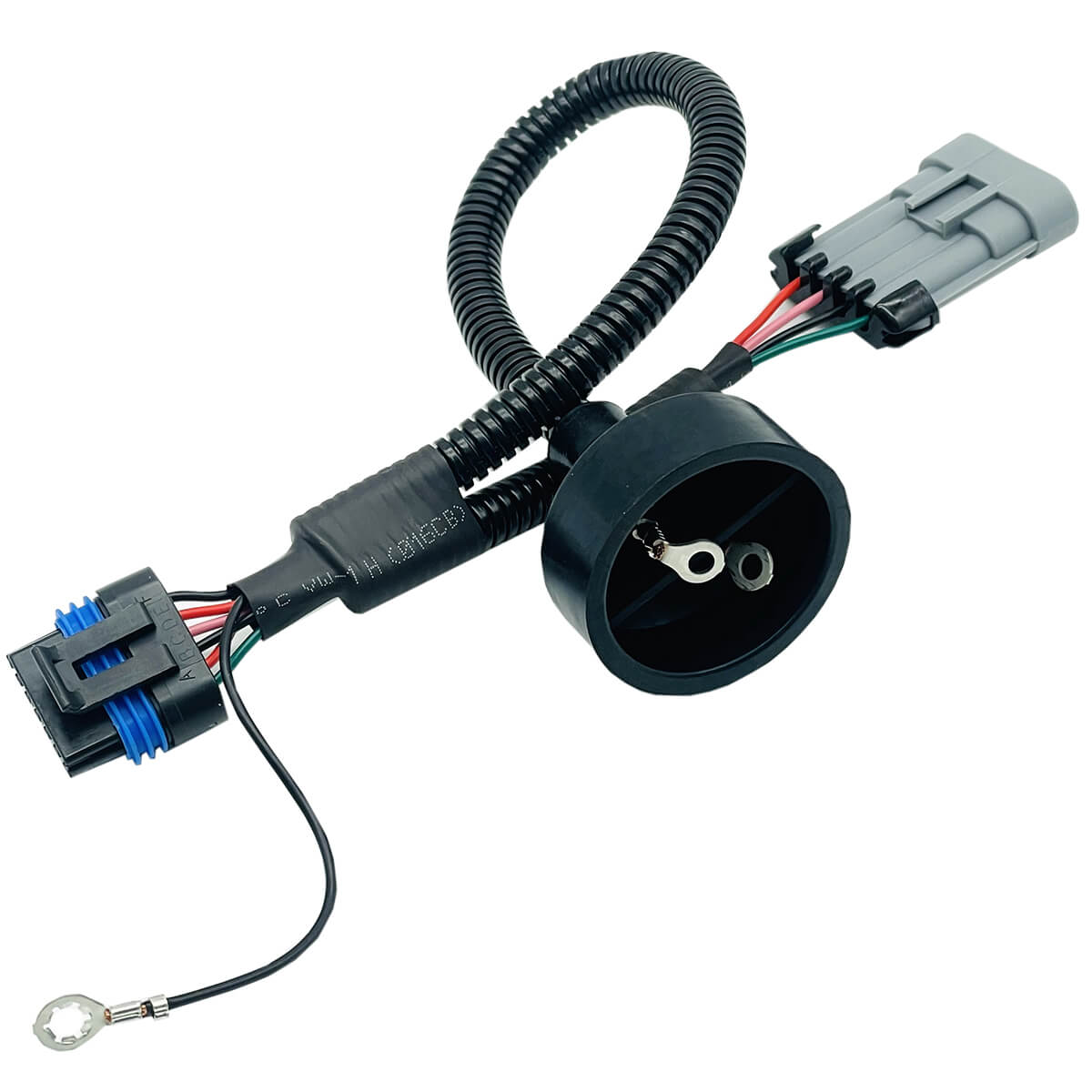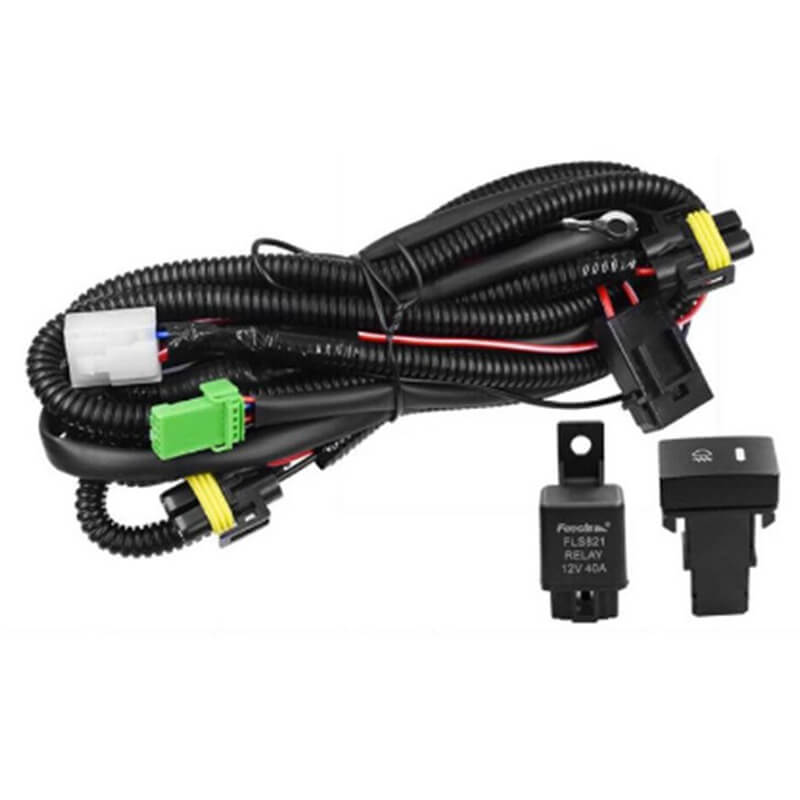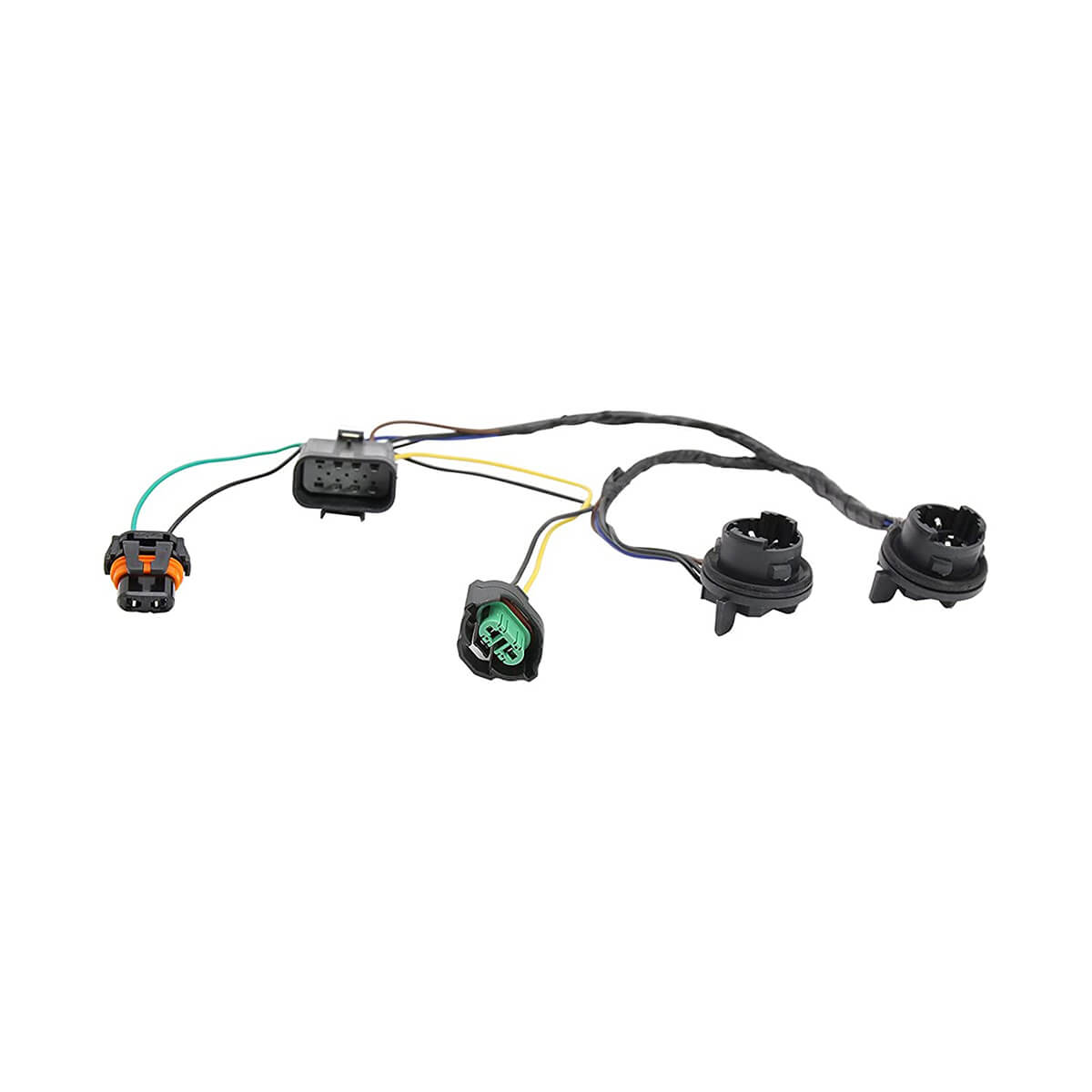Automotive Harness
The automobile wiring harness runs throughout the entire car. It connects various electrical devices on the car and serves as a medium for power supply and signal transmission of each device. The automobile wiring harness is ofTen compared to the car's neural network system. The automobile wiring harness is the network main body of the automobile circuit. Without the wiring harness, there would be no automobile circuit.
Functions and effects
The wiring harness is an indispensable system-level component in the vehicle. Its function is to provide and distribute power to various systems in the vehicle, and at the same time, it serves as a medium for signal transmission between various components.
| cable | AVSS,CQC 0.5mm²,0.75mm²,1.0mm²,1.25mm² |
| Plastic shell | nylon PA66,PBT+GF10% |
| terminal | tinned copper |
| wire | copper core, PVC jacket |
| Rated temperature | -40to +125°C |
| wire harness | PVC, TPE |
| Applicable current | 15A |
| Applicable voltage | 300V AC/DC |
| Flammability rating | 94V-0, VW-1, CSA FT1 |

Connects electrical components in a vehicle: The harness provides a reliable and secure way to connect electrical components in a vehicle.
Available in a variety of lengths and configurations: The harness is available in a variety of lengths and configurations to fit different vehicles and electrical systems.
Easy to install: The harness is typically installed by a qualified technician.
Automotive harnesses are an essential part of any vehicle's electrical system. They provide a reliable and secure way to connect electrical components and ensure that the vehicle's electrical system operates correctly.
Components of automotive low-voltage wiring harness
The range of low-voltage wiring harness components is wide, including cables, connectors, terminals, fuse boxes, relays, fuses, plastic brackets, metal brackets, PVC insulation tubes, corrugated tubes, heat shrink tubes, sealing rings, rubber sleeves, tapes, Cable ties, protective covers, bolts, etc.
Automotive wiring harnesses are composed of wires, connectors, wire harness wrappings, wire harness fixings (buckles, rubber parts, wire harness brackets, etc.) and wire harness accessories.
The application fields of car light wiring harness include
Interior ambient light wiring harness, reading light wiring harness, headlight wiring harness, tail light wiring harness, fog light wiring harness, indicator light wiring harness, etc.


An automotive harness should be used whenever you are installing an electrical component in a vehicle. Using an automotive harness will ensure that the component is connected correctly and safely.
Automotive harnesses are an essential part of any vehicle's electrical system. They provide a reliable and secure way to connect electrical components and ensure that the vehicle's electrical system operates correctly.
An Automotive Harness connects various components of a vehicle, including the engine, transmission, lights, sensors, infotainment systems, airbags, and other electrical and electronic components. It establishes the vital connections required for the vehicle to function efficiently and safely.
Automotive Harnesses are manufactured using automated processes and specialized machinery. Engineers design the harness layout based on the vehicle's specifications. Wires are cut to precise lengths, stripped, crimped with connectors, and bundled together. The assembly undergoes rigorous testing to ensure it meets safety and quality standards before installation in vehicles.
Automotive Harnesses enhance vehicle reliability by minimizing electrical interference, ensuring proper insulation, and providing secure connections. By protecting wires from environmental factors and wear, harnesses prevent short circuits and electrical failures, leading to a more reliable and durable vehicle.
Automotive Harnesses play a crucial role in vehicle safety by connecting safety-related components such as airbags, anti-lock braking systems (ABS), and sensors. Properly functioning harnesses ensure that these safety features operate as intended, protecting occupants in the event of an accident or emergency situation.
Yes, Automotive Harnesses can be customized for specific vehicle models. Manufacturers design harnesses tailored to the unique requirements of different vehicles, accommodating variations in features, sizes, and layouts. Customization ensures optimal compatibility and performance in specific automobile models.
Automotive Harnesses undergo rigorous testing processes to ensure quality and durability. These tests include checks for electrical continuity, insulation resistance, temperature resistance, vibration resistance, and water resistance. Harnesses must meet industry standards and pass these tests before being approved for use in vehicles.
Common issues with Automotive Harnesses include wear and tear due to vehicle vibrations, exposure to extreme temperatures, or damage from accidents. Additionally, corrosion, faulty connectors, and insulation degradation can lead to electrical problems. Regular inspections and maintenance help identify and address these issues promptly.
Damaged Automotive Harnesses are either repaired or replaced based on the extent of the damage. Minor issues like broken connectors or damaged insulation can be repaired by splicing and reconnecting wires. For extensive damage, replacing the entire harness is the safer and more reliable option, ensuring the vehicle's electrical system functions correctly.
Yes, aftermarket Automotive Harnesses are available for replacement purposes. However, it's crucial to choose high-quality, compatible harnesses from reputable manufacturers or suppliers. Ensuring compatibility and meeting safety standards is essential to maintain the vehicle's functionality and safety.
Automotive Harnesses contribute to fuel efficiency by optimizing the electrical systems of a vehicle. Efficient harness design reduces electrical resistance, ensuring electrical components operate with minimal energy loss. This results in improved fuel efficiency by reducing the overall load on the vehicle's electrical system.